INTRODUCTION
This post is dedicated to the last of four lots that fell my way at James and Sons’ April auction (all exceedingly cheap – uncontested minimum bids in each case), lot 1186 which was a stout booklet of railway themed cigarette cards. This set dates from 1938.
PAGE BY PAGE THROUGH THE BOOK





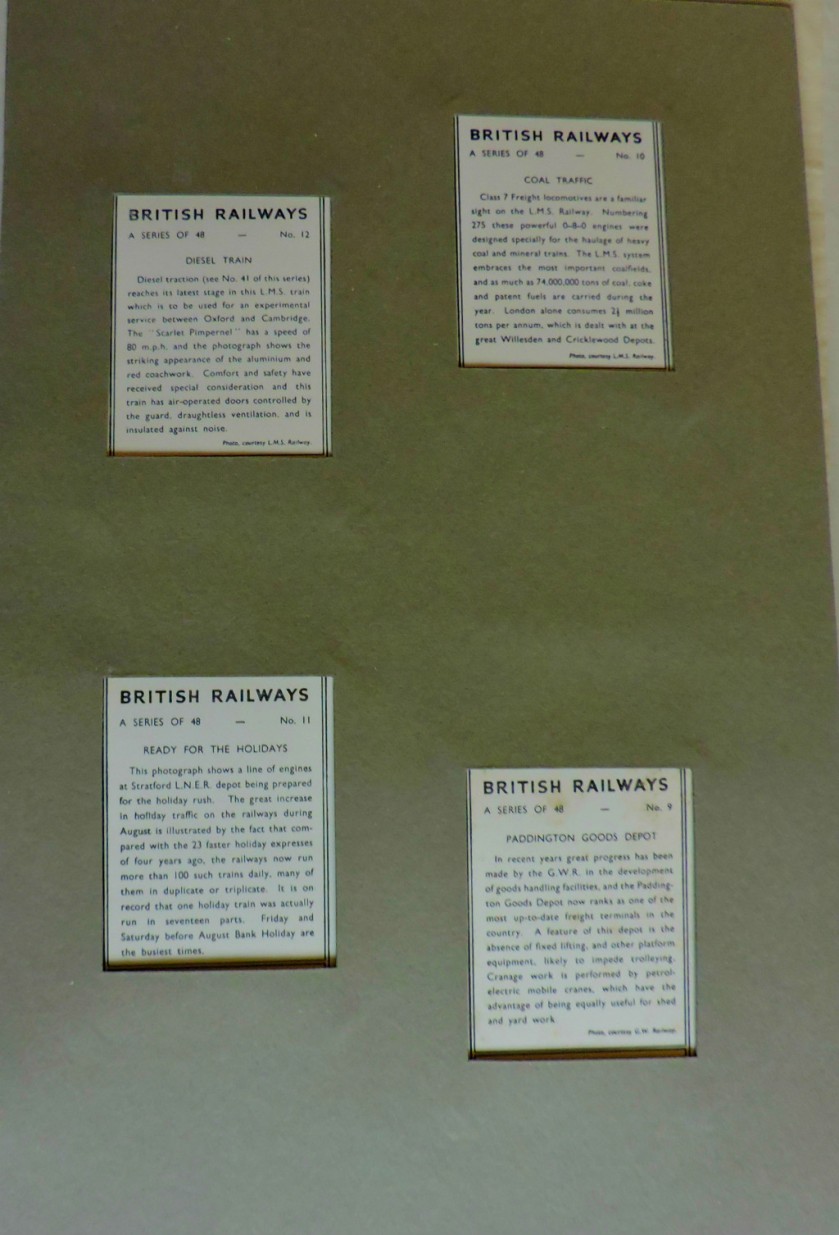


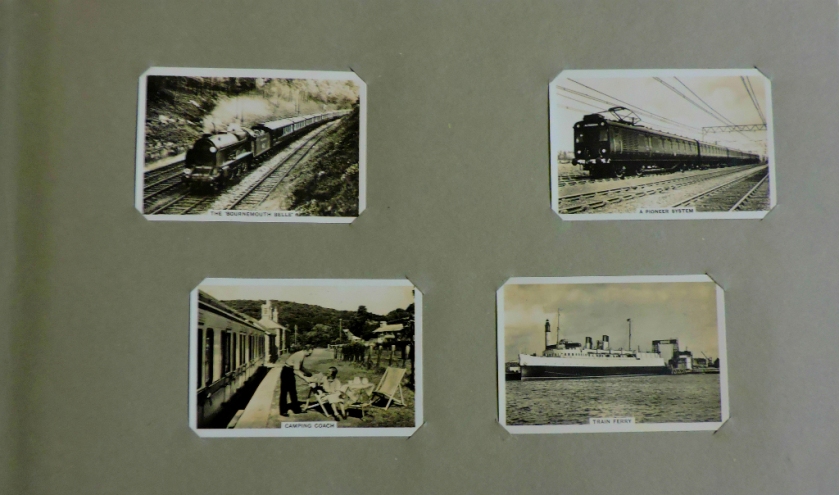






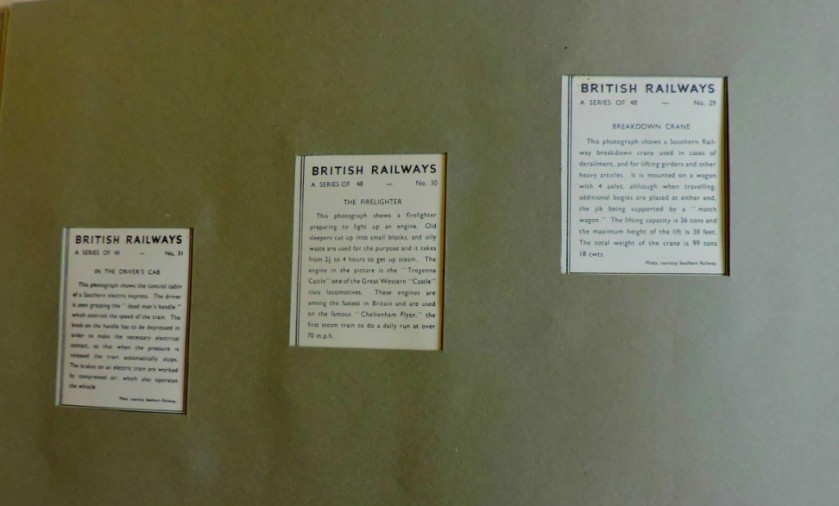
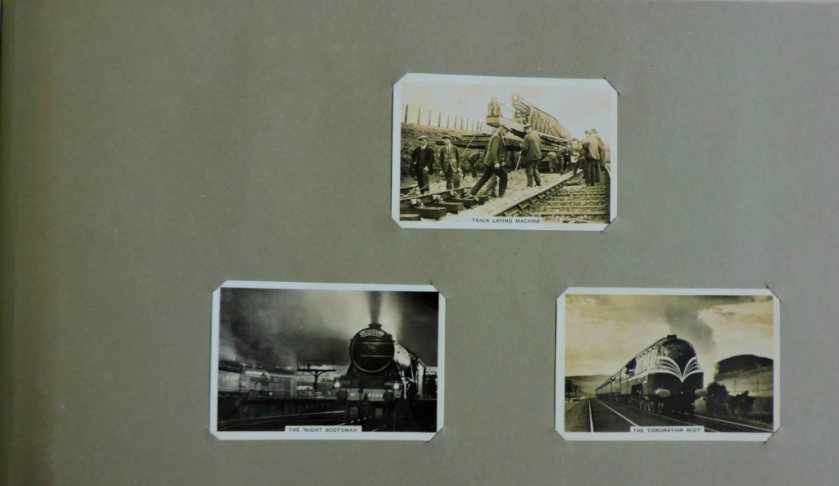

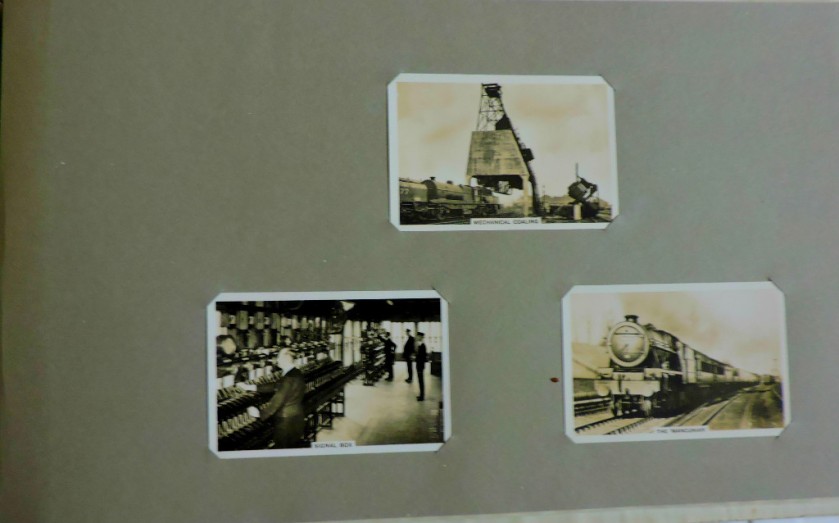

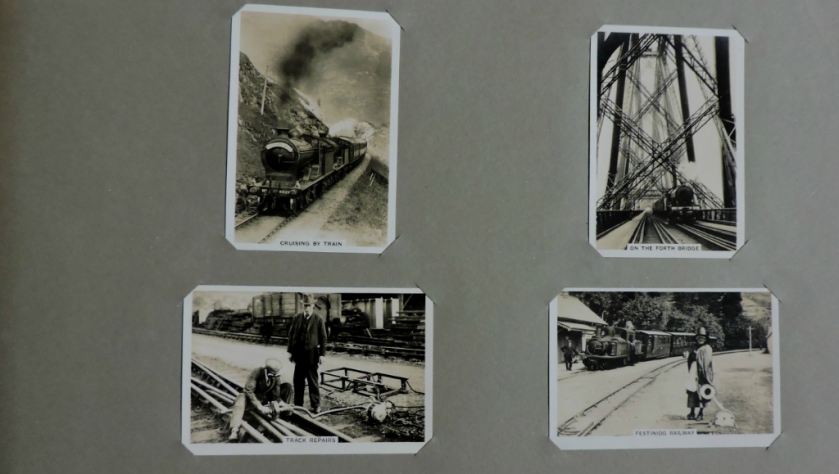



SOME CLOSE UPS
I also took some close ups of particular cards that caught my fancy.
CLOSE UP 1: LONDON UNDERGROUND STOCK
This prototype was not adopted on a large scale – the 1938 stock that came into service just after these cards were produced did not have the frontage that this stock did (I travelled on 1938 stock in my childhood, since the last specimens were only withdrawn from service in 1985, and even after that a few were used to run services on the Isle of Wight Railway). My estimate from the picture is that this particular train was somewhere near Southgate when it was photographed. There is a carriage of 1938 stock on display in the London Transport Museum, Covent Garden.


CLOSE UP 2: A LONDON UNDERGROUND SIGNAL ROOM
Even in 1938 most signals on London Underground were automatically triggered by trains, but there is human input as well…

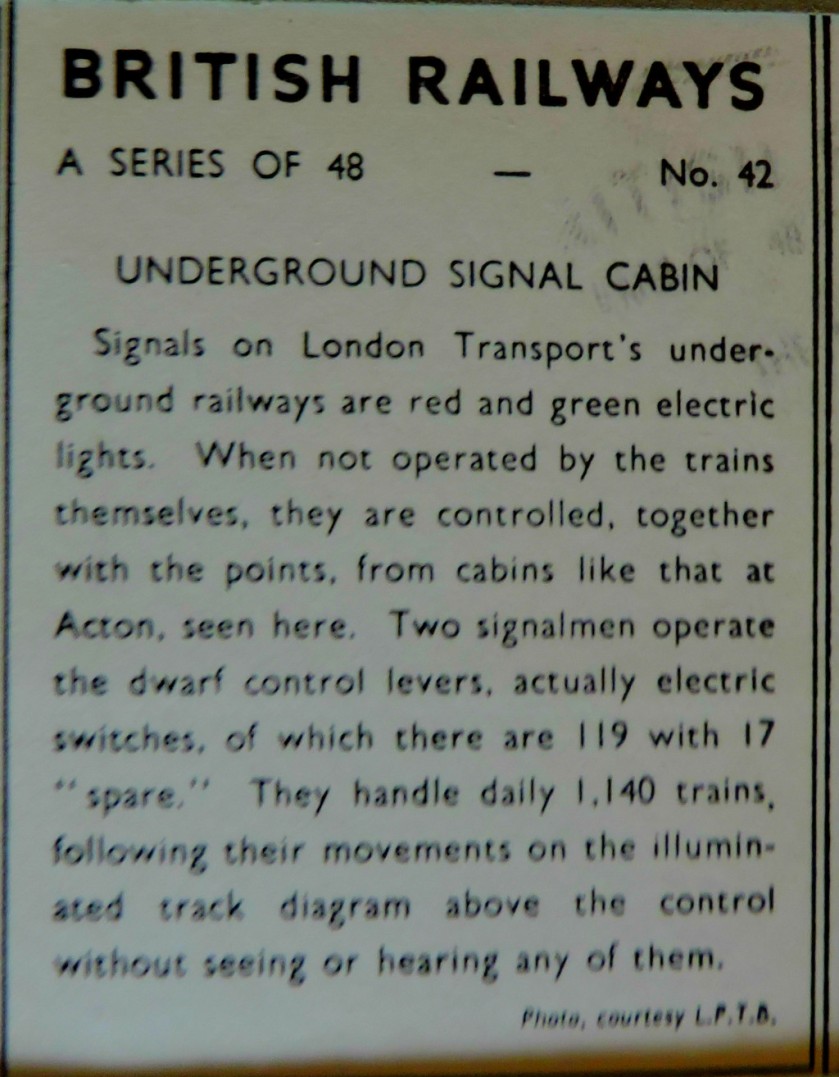
CLOSE UP 3: TWO TRAINS IN ONE
The sheer quirkiness of this appealed to me:


CLOSE UP 4: THE FFESTINIOG RAILWAY
This relates to my previous post. You will notice that the spelling on the cards is ‘Festiniog’. This is a reflection of anti-Welsh prejudice at the time (the Ff beginning is a Welsh language formation). For the low-down on today’s Ffestiniog Railway please visit their website.






